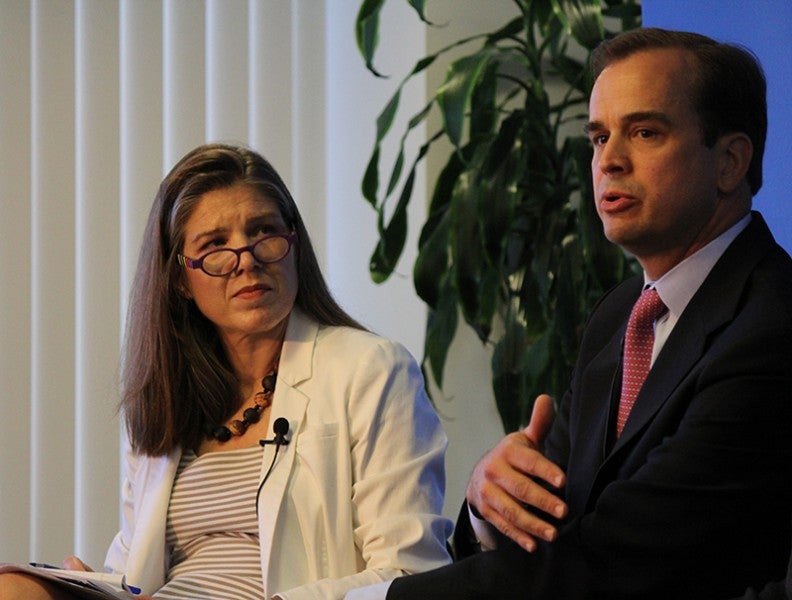
Washington Post reporter and event moderator Lori Montgomery with Capital One retail and direct banking President Jonathan Witter at the Aspen Institute in Washington, DC.
What’s changed for American consumers since the 2010 passage of the Dodd-Frank Act? At a recent Institute event, four leading experts at the intersection of the financial sector and everyday Americans sought to answer that question and discuss the continuing impact the financial fallout from recent years has had on families across the country.
“The crisis made it clear our financial system touched every American, even those who were underserved,” said Lisa Mensah, founder and executive director of the Aspen Institute Initiative on Financial Security, which put on the event. Whether it was credit cards, student loans, or homes, Americans felt this recession and they felt the need for financial reform.”
The resulting Dodd-Frank Act, which created the first US agency to protect consumers’ finances, was passed in an attempt to prevent a repeat of the contributing factors that led to the most recent recession. Since the law’s passage, both the financial world and its customers have been in a “state of transition,” said panelist Deputy Assistant Secretary of the Treasury for Consumer Policy Melissa Koide.
“I think the average consumer faces today a far more complex financial system than they ever faced before,” said panelist Marc Morial, National Urban League president and former New Orleans mayor. “Consumers are bombarded with a whole range of information that they have to figure out a way to sort through. People want to know, ‘who can I trust?'” Jonathan Witter, president of retail and direct banking at Capital One, agreed, said that consumer protection is an integral part of helping consumers rebuild family balance sheets.
Former US presidential candidate and President and CEO of Financial Services Roundtable Tim Pawlenty, whose organization’s members include most major US financial institutions, explained that there is an opportunity for better consumer engagement and transparency on the part of banks. For instance, product disclosures could be more reader-friendly; “a notice unread is no notice at all,” he said.
However, Pawlenty also offered a reminder of the unintended consequences of these federal regulations, which could end up “making business too difficult, too expensive, effectively driving demand into unregulated, less desirable places. That may not be a great tradeoff for consumers in the long run.”
As far as the effectiveness of Dodd-Frank, the panelists agreed that it’s too soon to tell. “I’ve always been a believer that Dodd-Frank is good, its thrust is good, [the Consumer Financial Protection Bureau] is good, but it’s a balancing mix between a system that is so regulated that there’s no movement, and the wild wild West,” said Morial. “We will not know how effective Dodd-Frank is for probably five — really a minimum of 10 years. These types of reforms are for the long-haul.”
Below, watch the full video of this event.

